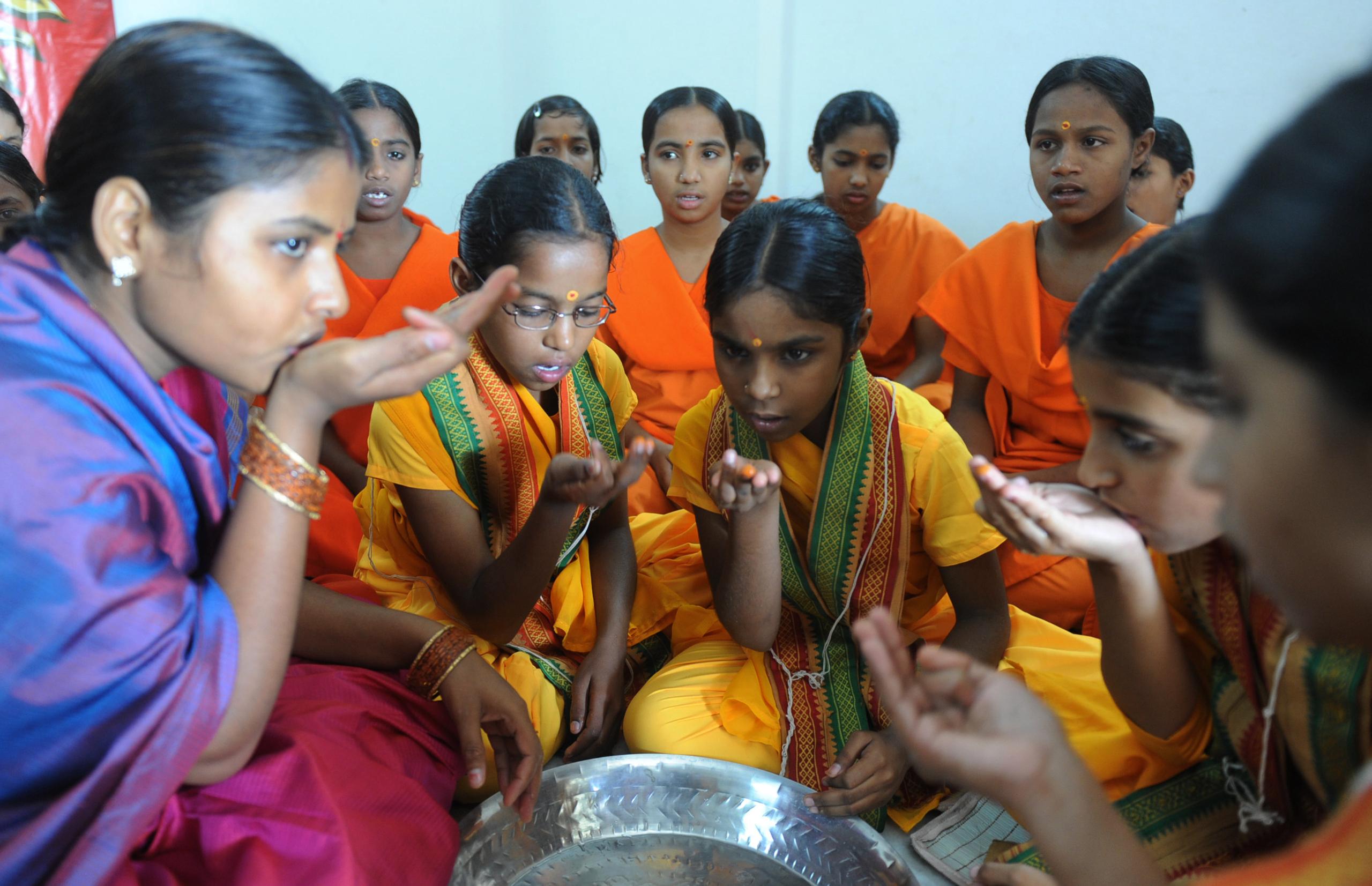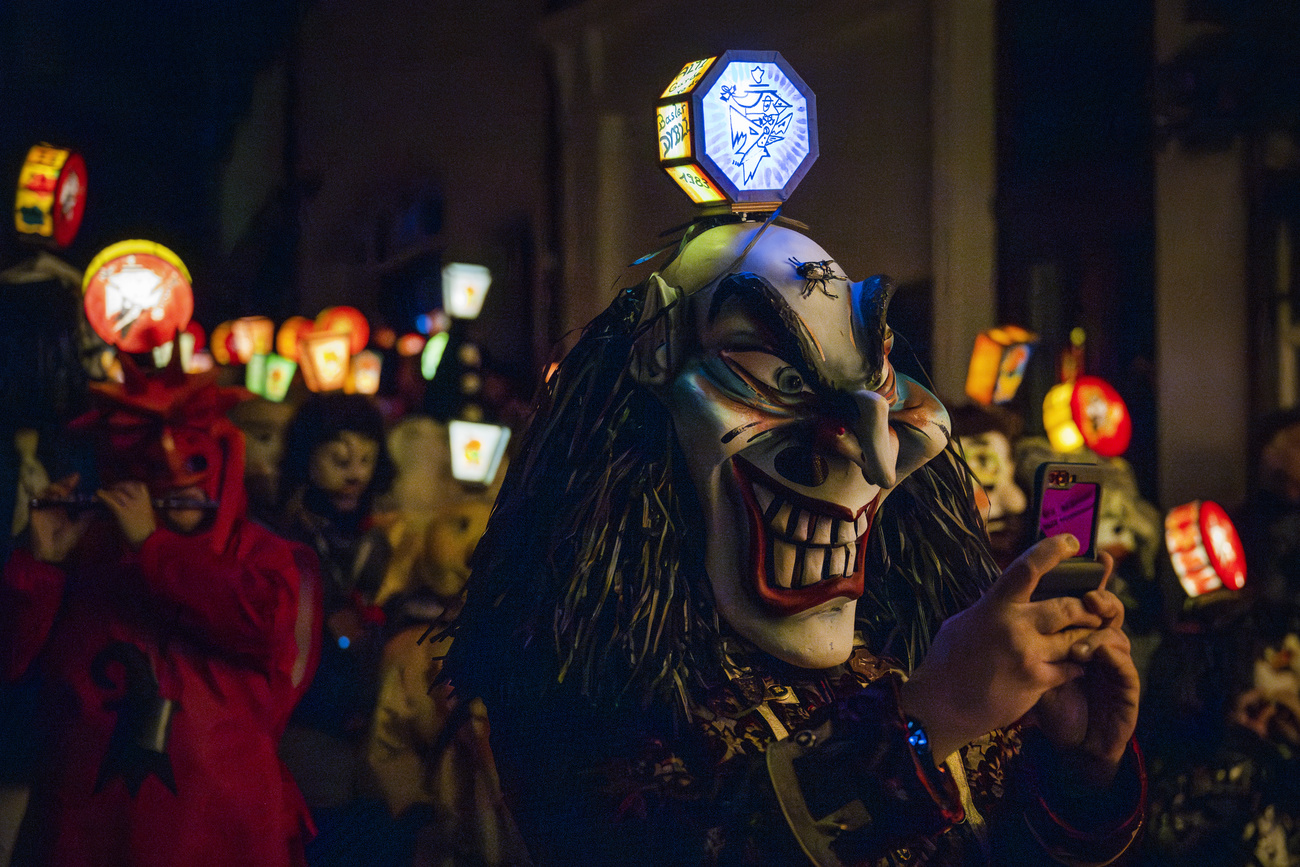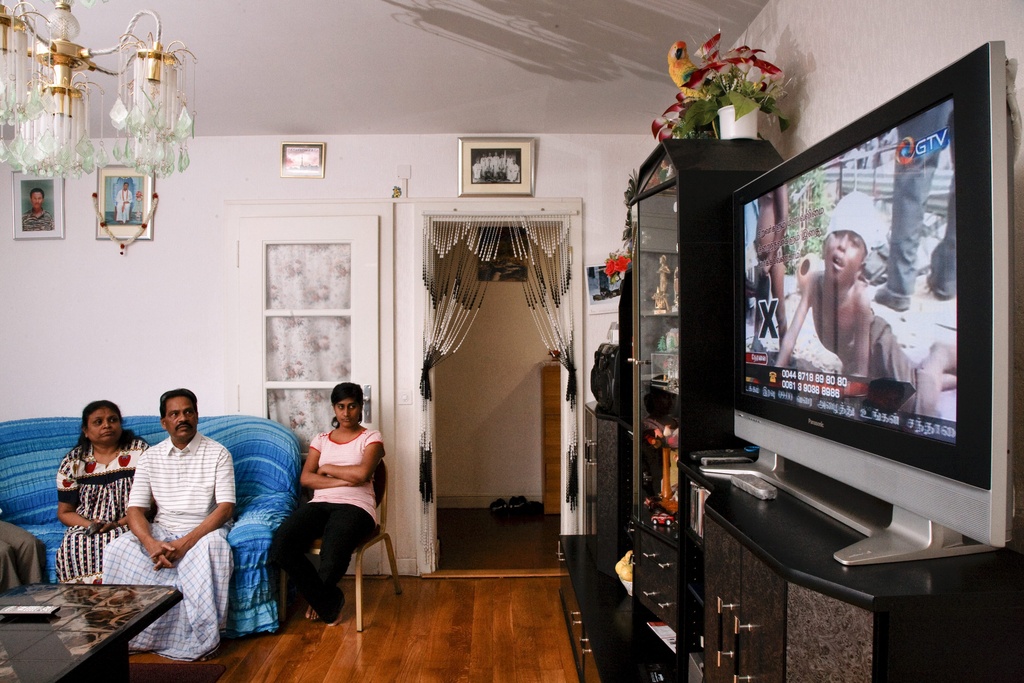Women priests break norms at Swiss Hindu temple

A Hindu temple in the Swiss capital Bern is one of the few in the world that allows women priests to officiate religious ceremonies. It’s a move that has been met with approval - and some dismay - by the local Hindu community.
It’s Friday and Mala Jayakumar is busy making preparations for the weekly ceremonial worship of the Saivanerikoodam Hindu temple’s principal deity Shiva. Few outsiders know about the colourful temple hidden behind the glass façade of the very modern-looking House of ReligionsExternal link in Bern.
In a few hours, the local Hindu community will gather to pray and seek blessings from Shiva and other gods and goddesses that are such an integral part of their devotions. Also integral to the ceremony are Jayakumar and three other women priests who have been trained and ordained to perform the religious rituals that are usually the preserve of men. A first in the Swiss Hindu community, and a rarity globally.
Questioning tradition
The idea of ordaining women priests in Bern came about as a result of interactions with curious non-Hindu visitors to the multi-faith House of Religions.
“They used to ask me why caste is so important or why prayers are not performed by women,” head priest Tharmalingam Sasikumar said. “These questions got me thinking.”
He went on a pilgrimage to India and Nepal to discuss the issue with scholars and religious leaders and came to the conclusion that there was nothing in the scriptures that expressly forbade women from serving as temple priests.
Sasikumar then made an open call to women in the local community to volunteer for the role of priests and Jayakumar was among the four women who accepted the challenge. She had left Sri Lanka for Switzerland 30 years ago to escape the ethnic conflict raging there.
“When I first came to Switzerland I felt very isolated and nostalgic,” she says. “There were no places to worship.”
She joined as a temple volunteer ten years ago, performing small jobs like greeting visitors and cleaning the premises. “I had no problems becoming a priest, as I always had great love of God and the temple. What I am doing feels right and gives me meaning in life.”
Preparing for change
To deflect any criticism from naysayers, the Saivanerikoodam temple association laid down some ground rules before opening priesthood to women.
“They should be willing to eat only vegetarian food and treat everyone equally, irrespective of their background,” says Sasikumar. There is also no monetary compensation for their time and effort. All priests serve on an honorary basis and only get a symbolic salary of CHF1.
A guru from India was invited to train the first four women pioneers and the temple association has developed a training programme to make it easier for more women to become priests. There are also plans to make the programme more structured and to eventually offer a two year diploma course for priests. Besides mastering rituals, the course will cover topics like Vedic astrology – to help identify auspicious dates for important events like marriages – as well as yoga and meditation.
However, the job entails much more than mastering religious rituals and spiritual practices.
“Instead of only performing prayers, the priest should be able to serve as a mediator and counsellor to the community,” adds Sasikumar.
According to Jayakumar, this is where women priests can prove their worth.
“Because of the pressures that come with living in a foreign country, many female devotees come to me with questions and requests for advice,” she says. “I use this opportunity to counsel them whenever they have any problems.”
Overcoming prejudices
Not everyone was happy about the idea of women priests supervising the religious ceremonies at the Bern temple.
“Some devotees complained that is against Hindu religious texts like the Vedas and that the priest has always historically been a man,” says head priest Sasikumar.
Most of the criticism came from older devotees used to a certain way of doing things, especially in their countries of origin.
“First generation Tamil immigrants and elderly people are conservative and find it difficult to accept,” says regular temple visitor Kannanathan Rajganna. “But I think in the long run it will be accepted, as it is a rational decision.”
To win over sceptics, the temple association organised several workshops and meetings where they clarified and justified the role of women priests by referring to various religious texts. But some members still remained unconvinced.
“Prayers are not just about hymns and rituals but also about the love with which they are performed,” says head priest Sasikumar. “If it is performed like a job without any love, people can sense it.”
He believes many people changed their minds after seeing the women perform the prayers and Rajganna agrees with him.
“Generally it is the women who sing hymns and are very involved when praying,” he says. “Having women priests perform the ceremonies gives a different ambience, as the love and compassion is more visible.”
But Rajganna accepts that it will be far easier to convince the Hindu community in Switzerland than elsewhere.
“Switzerland’s 30,000 Tamils, especially second generation, are more open about religion and ready to accept change,” he says. “This is difficult in India or Sri Lanka where society is more closed and Hinduism is seen more as a belief system than a way of life.”
Sasikumar adds that countries like India and Sri Lanka will have to change because fewer young men are training to become priests. “In the future, there will not be enough qualified applicants to fill priest positions in temples if women are not trained for the job,” he says.
Despite the numerous female goddesses and saints venerated by Hindus, the role of women in temples is typically confined to being mere devotees. Certain charitable organisations in India such as Shankar Seva Samiti and Jnana Prabhodini have trained thousands of women in the state of Maharashtra to carry out priestly duties. However, these priests are restricted to performing ceremonies in private homes and are not allowed to lead prayers at temples.
The Mel Maruvathur Adhi Parasakthi temple in the Indian state of Tamil Nadu is one of the rare Hindu temples that allows women to perform ceremonies inside the sanctum reserved for the deity. The 900-year-old Vitthal Rukmini temple in the Indian state of Maharashtra created a stir last year when it appointed two female priests after a ruling by the country’s Supreme Court.

In compliance with the JTI standards
More: SWI swissinfo.ch certified by the Journalism Trust Initiative












You can find an overview of ongoing debates with our journalists here . Please join us!
If you want to start a conversation about a topic raised in this article or want to report factual errors, email us at english@swissinfo.ch.